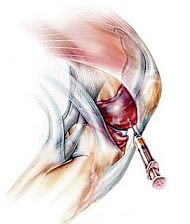 What is Prolotherapy
What is Prolotherapy
Prolotherapy or ligament reconstruction therapy is a recognized orthopedic procedure that stimulates the body’s nature healing processes to strengthen joints weakened by traumatic or over-use injury. When ligaments or tendon attachments are stretched, torn, or fragmented, the joints become hypermobile and painful. Traditional approaches with surgery and anti-inflammatory drugs often fail to stabilized the joint and relieve this pain permanently. Prolotherapy, with its unique ability to directly address the cause of the instability, can repair the weakened sites and produce new fibrous tissues, resulting in permanent stabilization of the joint.
How does Prolotherapy work?
With a precise injection of a mild irritant solution directly on the site of the torn or stretched ligament or tendon, prolotherapy creates a mild, controlled injury that stimulates the body’s natural healing mechanisms to lay down new tissue on the weakened area. The mild inflammatory response that is created by the injection encourages growth of new ligament or tendon fibers, resulting in a tightening of the weakened structure. Additional treatments repeat this process, allowing a gradual buildup of tissue to restore the original strength to the area.
What is in the solution that is injected?
The prolotherapy injections contain anesthetic agents and natural substances which stimulate the healing response. There are numerous substances, and each treating physician tailors the selection of substance according to the patient’s need.
Is the Prolotherapy treatment painful?
Any pain involving an injection will vary according to the structure to be treated, the choice of solution, and the skill of the physician administering the injection. The treatment may result in mild swelling and stiffness. The mild discomfort passes fairly rapidly and can be reduced with pain relievers such as Tylenol. Anti-inflammatory drugs, such as aspirin and ibuprofen, should not be used for pain relief because their action suppresses the desired inflammatory process produced by the injection.
Can Prolotherapy help everyone?
Each patient must be evaluated thoroughly with patient history, physical exam, X-ray exam, and full laboratory work up before treatment will be administered. With this information, your physician can evaluate your potential success with this therapy. Success depends on factors which include the history of damage to the patient, the patient’s overall health and ability to heal, and any underlying nutritional deficiencies that would impede the healing process.
What areas of the body can be treated?
This form of therapy can be used to treat dislocation of the joints, knee pain, shoulder pain, Temporal Mandibular Joint dysfunction, Carpal Tunnel Syndrome, and disc problems at any level of the spine. The therapy affects only the area treated and does not cause any problem in any other area.
How often do I need these treatments?
The treatments should be administered every one, two, or three weeks, as determined by your treating physician.
What’s the rate of success in treatment?
The anticipated rate of success depends on a number of variables, including the patient’s history and ability to heal, and the type of solution used. In patients with low back pain with hypermobility, 85% to 95% of patients treated experience remission of pain with this form of therapy. In comparison, the Journal of Bone and Joint Therapy reports on a 52% improvement in patients treated surgically for disc involvement.
Is this form of therapy really new?
Prolotherapy has been used successfully as early as 500 B.C. when Roman soldiers with shoulder joint dislocations were treated with hot branding irons to help fuse the torn ligaments in the shoulder joint. Advances in medicines greatly improved on this process, and led to the modern techniques of strengthening the fibrous tissue rather than producing scarring to fuse tissues. In 1926, a group of physicians met with great success using injection therapy to treat hernias and hemorrhoids. Earl Gedney, D.O., a well-known Orthopedist, decreased his surgical practice and began to inject joints with these newer injectible medicines in the 1940s and 1950s. Also, in 1950, George Stuart Hackett, M.D., wrote a book on injection therapy. His work is still used today in training physicians. In the years since this early work, techniques and medications have advanced to move from a scarring or fusing effect to a strengthening effect, which restores the weakened joint to its original level of stability, without loss of flexibility and function.
Article: Prolotherapy: Regenerative Solution to Chronic Joint Pain
